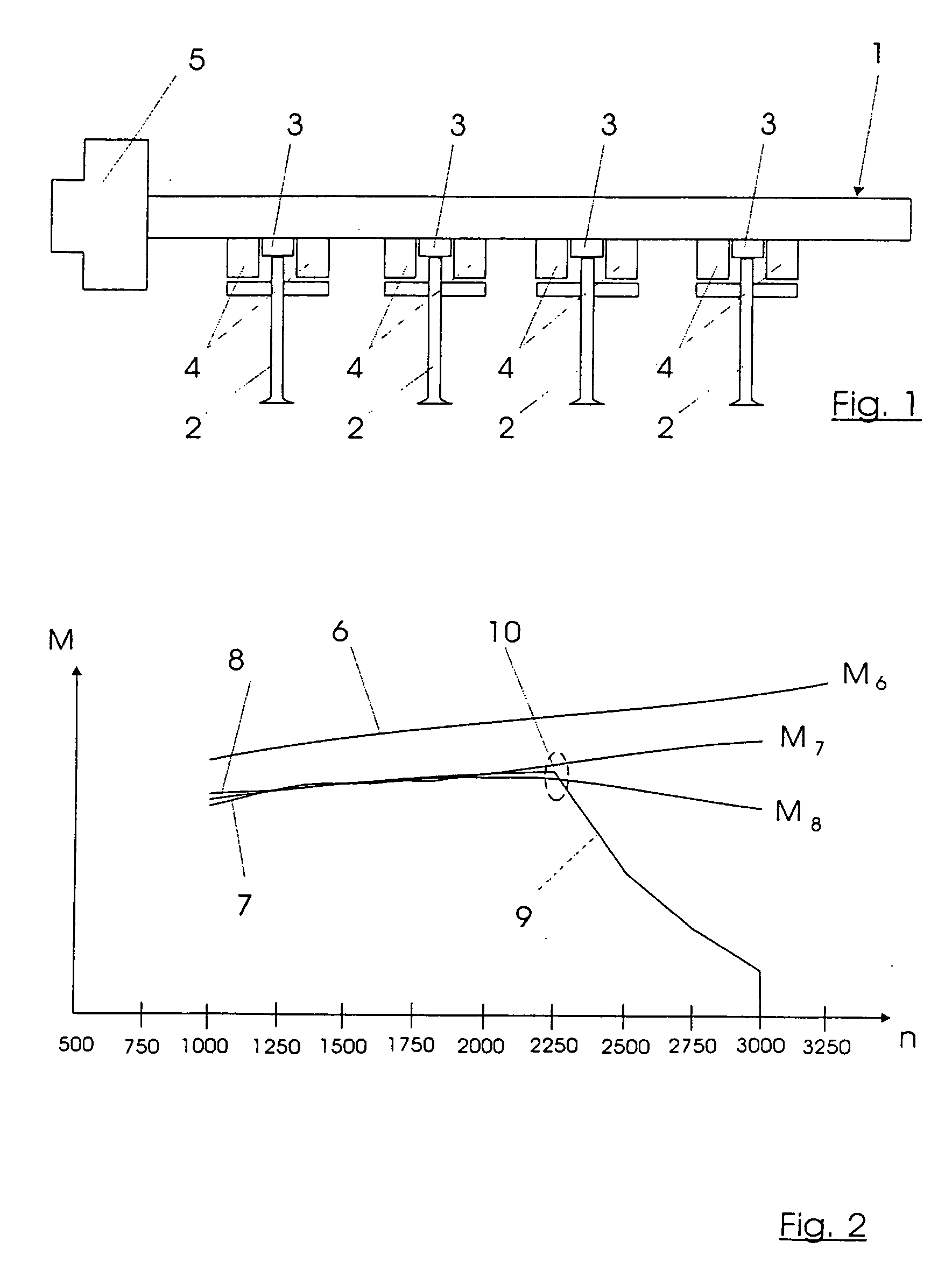Method for changing the lift of an inlet valve of an internal combustion engine
a technology of inlet valve and lift, which is applied in the direction of valve arrangement, combustion engine, machine/engine, etc., can solve the problems of difficult to achieve the effect of reducing suction capacity, difficult to achieve, and relatively great torque jump
- Summary
- Abstract
- Description
- Claims
- Application Information
AI Technical Summary
Benefits of technology
Problems solved by technology
Method used
Image
Examples
Embodiment Construction
[0017]FIG. 1 shows in a very diagrammatic illustration a camshaft 1 of an internal combustion engine (not illustrated in its entirety). The camshaft 1 serves for activating a number of inlet valves 2 which in a way known per se control the inflow of air or of a fuel / air mixture to cylinders (likewise not illustrated) of the internal combustion engine. In the present case, the engine is a V8 engine with two camshafts 1 for altogether eight or sixteen inlet valves 2. The internal combustion engine also comprises outlet valves and a camshaft for controlling the same, but these are, for reasons of clarity, not illustrated.
[0018]In order to provide different lift levels for the inlet valves 2, the camshaft 1 comprises a number of partial lift cams 3 and a number of full lift cams 4, between which changeover can take place in order to bring them alternatively into engagement with the inlet valves 2. When the partial lift cams 3 are in engagement with the inlet valves 2, the valve lift is ...
PUM
 Login to View More
Login to View More Abstract
Description
Claims
Application Information
 Login to View More
Login to View More - R&D
- Intellectual Property
- Life Sciences
- Materials
- Tech Scout
- Unparalleled Data Quality
- Higher Quality Content
- 60% Fewer Hallucinations
Browse by: Latest US Patents, China's latest patents, Technical Efficacy Thesaurus, Application Domain, Technology Topic, Popular Technical Reports.
© 2025 PatSnap. All rights reserved.Legal|Privacy policy|Modern Slavery Act Transparency Statement|Sitemap|About US| Contact US: help@patsnap.com


